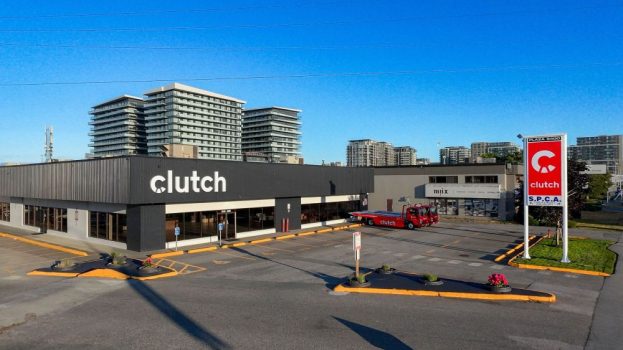Director of marketing Lawrence Hamilton has a compelling story to tell about the Canadian rise and fall of Korean automaker Hyundai, whose 30-year-presence in the country has largely been about offering customers great value at low-prices.
A few years ago, sales were slumping as a result of a misalignment between the car company’s value-based message and larger market trends, he says. So he and the marketing team set out to overhaul its local strategy. Three years later, that work has begun to pay dividends.
As of May, company figures indicate Hyundai was the only automotive brand to outperform the industry for 12 consecutive months. Sales numbers for that month show an increase of 1.4% from 2018, and Hyundai has sold roughly 51,500 cars so far this year, up 7.9% year-over-year. Meanwhile, several leading car companies, including Ford and Chevrolet, reported selling fewer vehicles in Canada last year – part of a larger industry trend. The exception might be Japanese automakers, whose sales and market share have grown for the last few years.
But Hamilton doesn’t feel that Hyundai’s success can be attributed to a more widespread shift in Canadians’ attitudes about Asian car companies. Rather, he pins its success on “telling people the right things about the product that are now aligned with the marketplace in a way that they’re more receptive to.”
When it first entered Canada in 1983, the company was so successful at selling a value-brand message that it became the “only thing Hyundai was recognized for,” Hamilton says. But a few things changed over time that made that strategy unsustainable.
First, it found itself “out of step with the production cycle,” he says. Whereas Hyundai continued pumping out new passenger vehicles, consumers had grown more interested in SUVs. Secondly, the global company began investing in the quality and technology of its vehicles, but its message remained the same. “We had a brand positioning that didn’t match the actual output of the vehicles,” Hamilton says. “We couldn’t price for the investment that we had made. We needed the brand to evolve, essentially, to support the fact that we’re actually building quality and far more contemporary products for people.”
[iframe_youtube video=”nxd61nWTzMg”]
To address the issue, Hyundai revisited its communications strategy and media mix. It used to spend around 60% to 70% of its budget on promoting retail offers, but it learned (working with Kantar Millward Brown) that product-focused messaging touting its vehicles’ capabilities was far more effective. And whereas Hyundai had historically relied on promoting its offers in newspapers and on TV, the new strategy called for going “all in” on digital, Hamilton says.
The move has enabled the brand to better track ROI, maximize its spend and optimize across its entire product lineup (as opposed to promoting a single one through more expensive TV buys). The approach can be seen in a spot launched in the Spring for the Kona (above), based on insights from Canadian-specific research. It has also invested in a new website to better capture data that is then utilized to more effectively target customers.
“We can more of less now predict the state of the business,” Hamilton says, summarizing efforts that have spanned several years. “Three years ago, the business was telling the marketing team what we should be doing in order to sell more cars. We in the marketing team are now in a position to give the organization much clearer advice. We’re making these multi-million dollar decisions with a lot more information now.”
According to Hamilton, working with Innocean (the company’s global in-house agency) has helped facilitate its transformation. The agency, he says, handles all its data, media buying, analysis and creative. “The flow of data is very good and we now share audience data from our CRM databases and our lead management and it goes back into the loop.”
While marketing has played a role in fueling growth, the brand’s product strategy has also contributed. Hyundai has diversified its portfolio of SUV vehicles (the fastest-growing segment in Canada), making it easier to compete against the well-known Nissan Rogue, Honda CRV and Toyota Rav4. This summer, it will introduce the larger and more-premium Palisade, adding an entry-level Venue model later this fall.
“We’ve sorted out a lot in our realm of control,” Hamilton says, but moving the brand from its value associations into a quality, mainstream position with high consideration is going to take “quite a long time.” Going forward, he says the priority will be working with Hyundai’s 220 Canadian dealers on adapting learnings and driving efficiency within their own operations. “We don’t want to mandate it. That’s not the relationship we have with our dealers.”
The journey so far has been “somewhat of a natural struggle,” he says. Applying theory to spreadsheets is one thing, but demonstrating a new strategy can work is another. “There were a lot of people in the way that we needed to convince – trust the data, not the previous 30 years of habits. I think that was probably the hardest part.”
























